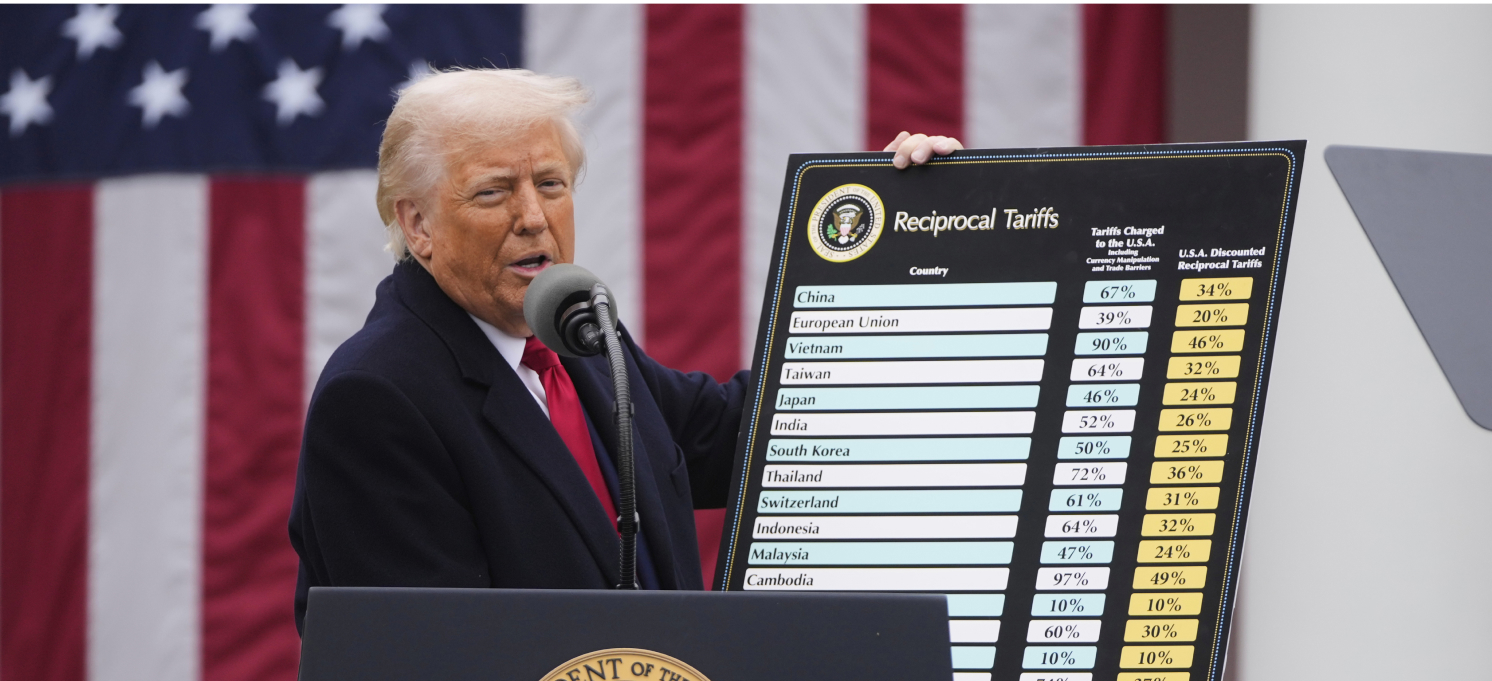
Central Bank hikes rates to 21%
Hello! Welcome to your weekly guide to the Russian economy—written by Alexandra Prokopenko and Alexander Kolyandr and brought to you by The Bell. Our top story is the Central Bank’s decision to hike interest rates to a record 21%. We also look at the IMF’s upgrade of its economic growth predictions for Russia in 2024, and why recent criticism of the international body has been unhelpful.
Central Bank raises rates two percentage points to record 21%
At Friday’s board meeting the Central Bank hiked interest rates by two percentage points to 21%. That’s the highest level in modern Russian history. And that’s not the end: the Central Bank indicated the rate could go even higher.
- “Inflation is significantly higher than the Bank of Russia’s June forecast. Inflationary expectations continue to increase. The growth of domestic demand significantly outpaces the scope to expand the supply of goods and services. Additional budget expenditures and the associated deficit in the 2024 Federal Budget also have a pro-inflationary effect,” the Central Bank in a statement.
- This level of interest rate is unprecedented. Even in the days after Russia’s full-scale invasion of Ukraine in February 2022, rates went no higher than 20%. Most economists expected a rate rise at this Friday’s meeting, but most thought it would go no higher than 20%.
- The main reason for the decision was recent clarity about state spending plans for 2024 and 2025 (the 2024 deficit is expected to be 3.3 trillion rubles or 1.7% of GDP, compared with a planned 0.9%). And inflation shows no sign of slowing.
- In its press release the Central Bank stated that it: “allows for the possibility of raising the base rate at the next meeting.” Based on the Central Bank’s forecast for the average rate at the end of the year (21-21.3%), it is prepared to contemplate a rate rise to 23% at December’s meeting (the final one of the year).
- The Central Bank now believes that inflation in 2024 will be 8-8.5% (compared with its previous forecast of 6.5-7%). This wasn’t a surprise for economists, following 11.1% seasonally adjusted price growth in the third quarter. Inflationary expectations, which the bank monitors closely, went up from 12.5% to 13.4% across the entire range of respondents in the most recent October survey.
- Despite sky high rates, the regulator also has higher expectations for lending growth: from 10-15% to 17-20% in the corporate sector, and from 10-15% to 12-15% for consumer borrowing. Corporate loans increased by 2% month-on-month in September, according to the Central Bank. And Over the nine months of 2024 they were up 14.5%. Given the high rate, businesses prefer loans at floating rates rather than fixed rates. At the same time, subsidized loans make up about 8% of GDP — roughly the same as government military spending. Of course, it’s worth remembering that the defense sector is one of the biggest preferential borrowers. This all illustrates the “prisoner’s dilemma” – a principle from game theory in which, using uncoordinated strategies, the best decision for one individual leads to a suboptimal outcome for the entire group, weakening the collective position.
- Of course, the danger of keeping interest rates high for a long period of time is that debt-laden enterprises sensitive to interest rates will be unable to refinance their loans and will go bankrupt.
- At the same time, the government is increasing spending, including via subsidies on business loans, which is fueling inflation. The result is a strange phenomenon: the Central Bank, responsible for inflation, needs to raise interest rates to slow price increases. But government spending is making inflation worse.
Why the world should care
The Central Bank’s calculation of risk has shifted, and data from August and September show signs that Russia could enter a period of “inflation without growth.” For the moment, the Russian economy has not fallen into stagflation, a dangerous situation where the economy grows slowly and prices shoot up fast. But it’s getting closer.
IMF predicts 3.6% Russia growth amid Moscow mission scandal
The International Monetary Fund (IMF) on Tuesday followed the World Bank in upgrading its forecast for Russian economic growth this year—to 3.6%. However, next year, the IMF expects an abrupt economic slowdown, almost to the point of stagnation. The Russian government has similar forecasts, albeit slightly less pessimistic.
What’s going on?
The IMF this week raised its projected growth for the Russian economy in 2024 by 0.4 percentage points to 3.6%—up from the 3.2% it forecast in July. The main reason the IMF gave for the upward revision was a fall in consumption and private investment amid a growing labor shortage.
At the same time, the IMF’s 2025 forecast for Russia is getting less rosy, and was downgraded from 1.5% to 1.3%. According to the IMF, Russia’s economy will remain at this kind of growth rate (about 1.2%) until 2029. That’s far lower than what Russian President Vladimir Putin wants, and below the level expected for most developing nations. The IMF forecast confirms that Russia is trending toward stagnation.
Russian government economists have also identified labor shortages as a reason for the expected slowdown. However, their prognosis is more optimistic. In the 2025-27 draft budget, the Finance Ministry anticipated growth of 2.5% in 2025, twice the level of the IMF. In 2024, the ministry expects 3.9% growth.
Russia’s slowdown, according to the IMF, will be accompanied by a bigger slump in real income growth than officials expect. After a big fall in real income growth in 2022, rising state spending has helped incomes in Russia increase faster than even the average for developing countries. But the IMF expects that to fall next year by more than half to just 1.7%. That’s roughly the level in the developed world.
The IMF also highlighted the increasing fragmentation of world trade following Russia’s invasion of Ukraine as one of main risks to the global economy. According to the IMF, the pace of deglobalization is currently faster than that at the start of the Cold War.
Among more positive news for Russia, the IMF predicted that energy prices will fall slower than previously predicted: they will still go down, the IMF said, but not as fast as projected in July. At the same time, the IMF pointed out that Russia continues to sell oil to India and China at a discount of up to $20 a barrel, global demand for oil is declining, and supply from countries outside cartel OPEC is rising. The IMF also expects the rise in prices for non-oil-and-gas raw materials to slow, which will have negative consequences for the Russian economy.
Mission to Moscow
The IMF last month came under fire from European officials over its plan to send a mission to Russia. There was particularly harsh criticism in Fortune magazine from two directors of the Kyiv School of Economics, as well as a Yale professor.
IMF head Kristalina Georgieva was accused of normalizing the war in Ukraine, and pandering to Putin’s regime, with her critics using IMF forecasts as evidence she was parroting Kremlin narratives and uncritically using Russian statistics. However, the “promotion of Kremlin narratives” claim was also made in 2023 when the IMF was the first international organization to (correctly) abandon its catastrophic projections for the Russian economy. Instead, they realigned with Russian economists, who were already talking about growth. Since then, this has become reality.
One of the criticisms leveled by the authors of the Fortune article was the appointment of Ksenia Yudayeva, a former deputy head of the Russian Central Bank, as the IMF’s new country director. Yudayeva, who they described as “Putin’s crony” was sanctioned by the U.S. in 2022 for her connections with the nationalized Otkritie Bank. However, she has never been part of Putin’s inner circle, nor is she considered close to the president.
Some critics of the IMF believe that issuing positive economic forecasts for Russia casts doubt on the effectiveness of sanctions, and undermines Western unity. As a result of the controversy, the IMF’s mission to Russia was postponed indefinitely.
The reliability of Russian statistics is, indeed, a contentious issue. Since the full-scale invasion of Ukraine, Russia has classified a lot of formerly publicly-available data – from oil production to export-import flows. But there is no significant reason to believe that statistics are being fabricated. The Bank of Finland, for example, one of the most meticulous researchers of the economy of Russia, said in a recent study that they had found no evidence to back up the suspicion of systematic manipulation. The authors warned against assuming that the Russian authorities were deliberately misrepresenting the data to paint a more rosy picture of the country’s economic circumstances.
Why the world should care
Russian officials and the IMF agree that the Russian economy will likely slow next year after a period of rapid growth fuelled by government spending and rising commodity prices. However, the IMF would have been in a position to give an even more detailed assessment of Russia’s situation had it not been for the vocal campaign that led to the cancellation of its mission to Moscow. Such a mission would have gone some way to mitigating the effects of incomplete Russian statistics, and the politicization of economic research.
Figures of the Week
The head of state defense corporation Sergei Chemezov said this week that Russia could soon cease all arms exports. Increased demand from the Russian military is forcing Rostec to focus on the domestic market, while high interest rates are “eating up all the profits that have to be paid to the banks,” he said. Another reason is likely the impact of Western sanctions, which has made sourcing imports of key components much harder. Between 2022 and 2024, Russian arms export sales were 60% less than the previous three years, according to the Stockholm International Peace Research Institute. At the same time, Russia’s share of the global arms market halved from 8.8% in 2021 to 4.4% in 2023.
Between Oct. 15 and Oct. 21, weekly inflation in Russia increased from 0.12% to 0.2%, according to the State Statistics Service. Annual inflation was up from 8.51% to 8.52%.
State-owned Sberbank has temporarily stopped issuing loans in yuan, a top executive told Interfax. The bank doesn’t anticipate any improvements when it comes to yuan liquidity and will continue to reduce its foreign currency loan portfolio.
Russia has ordered the release of almost 500 billion rubles ($51.6 billion) of additional funds from the Cabinet Reserve Fund to subsidize preferential mortgage programs. “The need to allocate additional funding is linked to, among other things, the Bank of Russia’s high base rate,” the document explained. One reason for high interest rates is the increase of subsidized loans in the Russian economy, especially preferential mortgages.
Further reading



PAID SUBSCRIPTION LAUNCH
From May 1, 2025, The Bell in English will no longer be free
From May 1, 2025, all The Bell’s newsletters and online content will be behind a paywall. We have taken this decision so that The Bell can remain financially independent, and maintain our high standards of journalism and economic expertise






